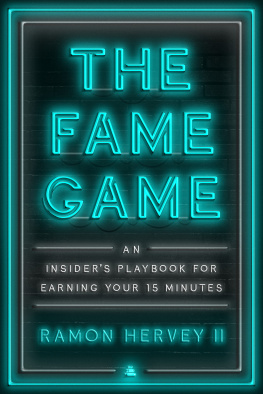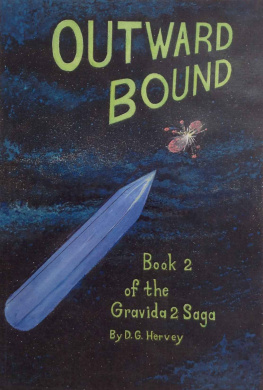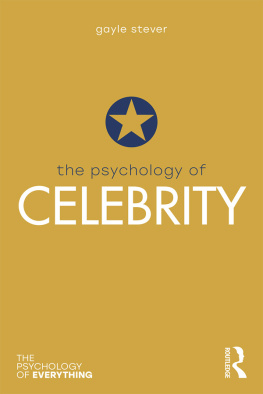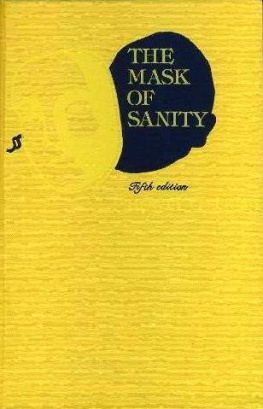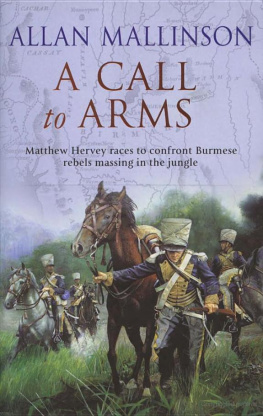Over the past four decades, Ive passionately invested my professional career and livelihood in playing the fame game. As a seasoned proliferator of fame, I find it impossible to ignore our fascination, insatiable desire for, and obsession with fame, branding, celebrity cachet, and social media influencer stardom. Its allure, pomp, pretense, and enviable rewards are more coveted now than at any other time in modern history.
However, there is no failsafe expert playbook, foolproof recipe, magic potion, serum, diet, spiritual path, holistic herbs, manager, Svengali, mentor, coach, agent, performance school, or university that can guarantee stardom and fame. The challenges and strategies are not universally the same for everyone. Theres no spin bible that offers the secrets on how to craft an effective strategy to counter and create a positive spin on a major crisis or canceling that arises. If there were, someone would be selling it.
Ive never had a desire to be famous, but the perception of fame and its link to success has always intrigued me. Andy Warhol popularized the iconic pop culture phrase In the future, everyone will be world-famous for fifteen minutes. It surfaced in a program for a Swedish exhibit at the Moderna Musset in Stockholm in 1968. But photographer Nick Finkelstein claimed credit for the phrase which was said in a conversation with Warhol while doing a photo shoot of him. As a crowd gathered to get a peek of Warhol, Warhol remarked, Everyone wants to be famous, and Finkelstein replied, Yeah, for about fifteen minutes, Andy. Regardless, once I heard the expression, I latched on to it and made it my mantraadding my own twist to it. I dont think its possible for everyone to get fifteen minutes of fame. But, in the entertainment business, if youre lucky enough to get fifteen minutes, used wisely, you can milk it and sustain a lengthy career.
If you only get ten minutes, youll reach a lower plateau of fame, but can still experience a moderate level of sustainable success. From five to ten minutes, you can be popular and quasi-famous, but youre not in the upper echelon. Anything under five minutes and you can hang on to your anonymity and walk freely wherever you go. There is an internal industry system that assesses a talents commercial success and fame. Major film studios, broadcast networks, and record labels set their own rating prerequisites. In turn, they pay the most famous the highest fees, rewards, access, and benefits. People who earn fame have the right to exploit and use it however they see fit. There is no right way, only the way that works best for the person. They reap the benefits or deal with the adverse consequences of their choices.
I chose the title The Fame Game because it captures and personifies the inherent spirit of the unpredictability of fame. While not a frivolous game, it requires that the players possess the comparable level of talent and skills to compete and play any professional game at its highest level. Add to that, all the games that we love and are most fascinated by dont have a pre-determined outcome. In most instances, the behind-the-scenes powerbrokers in the entertainment industry who play, and fuel, fame are guessing; the talent is guessingand Ive guessed hundreds of times myself. Its not rocket science or based on scientific methodology. Its a crapshoot. Its bias. There are inherent risks. Developing a successful and famous star takes a collective and concerted team effort. There is no I in team or fame.
Im not posturing to be a wunderkind, nor is this a tell-all expos filled with mudslinging and innuendo, a vanity project, or a how-to guide. It was premature for me to write a memoir because Im an eternal optimist and believe my best years are looming in my future. Hence, I framed this work as a career retrospective and my promoir. My inspiration for authoring my book is to share my unique story and put you in the passengers seat to experience my roller-coaster ride representing a cavalcade of prominent Black and white entertainers in contemporary pop culture in the twentieth and twenty-first centuries. Its an insiders glimpse of their career journeys; my perspective, philosophy, and path; influential historical context; and the invaluable lessons I learned from guiding and collaborating with them on their trek to fame.
My first personal interactions with famous people happened while I was living in London, England, working as a flight attendant on Pan Am Airways as one of the first Black males hired as a steward in the early seventies. I served stars like Miles Davis, Richie Havens, Peter Jennings, Shirley MacLaine, and Keith Moon from the Who, among others. After an eighteen-month stint I landed a job as writer/publicist at a talent agency, Starlite Artists, owned by Peter Walsh, who represented the Bay City Rollers, the UKs biggest pop band, Marmalade as well as Clem Curtis & The Foundations, and Mac and Katie Kissoon, among others.
After moving back to the States, I worked in the same capacity for Motown Records, when Berry Gordys label roster of famous superstars included Stevie Wonder, Diana Ross, Marvin Gaye, the Jackson 5, the Temptations, and Smokey Robinson, among others. Later, I earned my stripes working at one of the premier entertainment public relations companies in the industryRogers & Cowanand represented the top talents in the world. I embarked on my own as an entrepreneur in the mid-80s, which is the path where Ive logged the most miles in my forty-year career.
The geneses of my link to fame are the consequences of coincidence, resiliency, luck, and invaluable tutelage that prepared me to serve in a myriad of entrepreneurial roles, launching public relations and management companies and serving as an entertainment publicist, personal manager, management consultant, brand consultant, music supervisor, and a live event, film, and TV producer.
Ive been blessed and lucky to be in the trenches and experience hundreds of iterations and variables of fame firsthand while representing Richard Pryor, Bette Midler, Paul McCartney, Little Richard, the Bee Gees, Quincy Jones (The Wiz soundtrack), Harry Belafonte (and his artist-driven non-profit Sankofa.org), Herb Alpert, Peter Frampton, the Carpenters, James Caan, Nick Nolte, Rick James, Anita Baker, Natalie Cole, George Benson, Vanessa Williams, Kenny Babyface Edmonds, Luther Vandross, Andra Crouch, the Jacksons with Michael Jackson, Daphne Rubin-Vega, the Commodores with Lionel Richie, Motown Records, Don Cornelius, Soul Train, Philippe Saisse, Sweet Honey in the Rock, the Soul Train Music Awards, Hall of Famer St. Louis Cardinal star Lou Brock, Chic, Alabama, Muhammad Ali, Caitlyn Jenner, and NBC-TVs long-running music series The Midnight Special, to name just a few.
Ive built my own brand identity based on the relationships and bonds I forged with them. They shaped my brand persona as much as I helped shape theirs during our engagement. I believe theres an art to creating and building larger-than-life personas, a skill set and an intuitive sense which are not unique to me but that I covet and share with my peersmany of whom have been successful as publicists or managers.
Fame can produce huge egos, inordinate stress, anxiety, self-doubt, or it can strengthen and empower. Every rise to fame has a different story, heartbeat, ebb and flow, set of unforeseen challenges; different celebratory high notes, rejections, failures, and faux pas. In each chapter, I highlight a myriad of transparent and uncensored behind-the-scenes sagas I learned managing all phases of fame; creating, conceptualizing, manifesting, shaping, molding, sustaining, preserving, fixing, mopping up after a crisis occurs and things go awry, and launching comebacks to resurrect damaged and famous reputations that were tottering and on the brink of disaster, or by todays standards, canceled. I chronicle the clients that most influenced, peppered, and spiced up my career, their roots, big breaks, greatest successes, inflection points, and downfalls. And I portray my own triumphs and failures, and how both affected me emotionally and psychologically and impacted my career trajectory.

